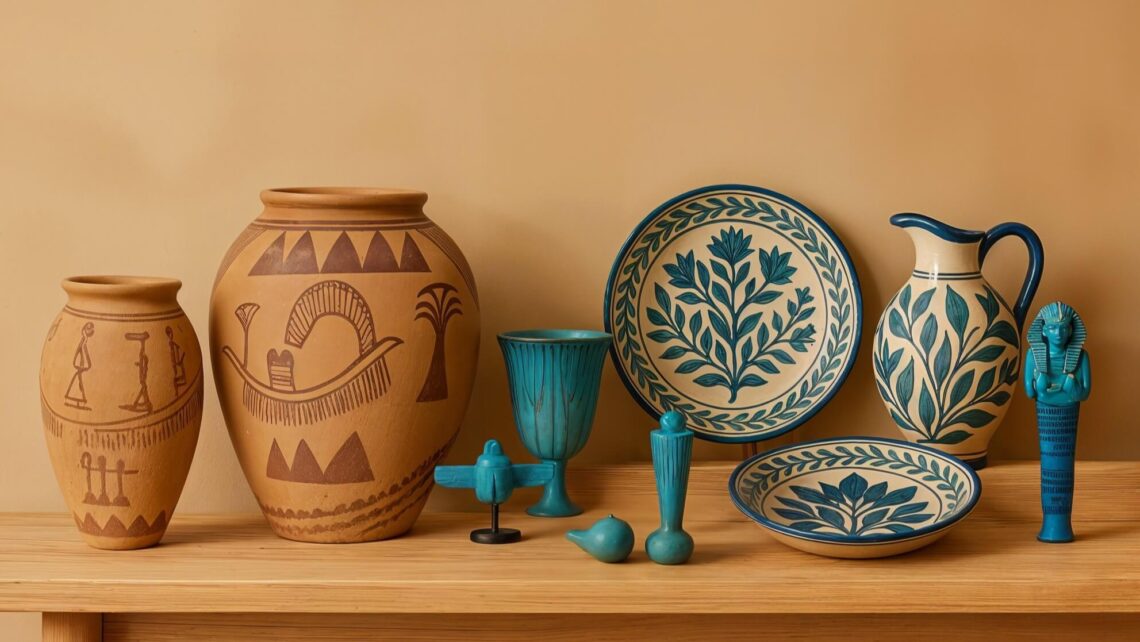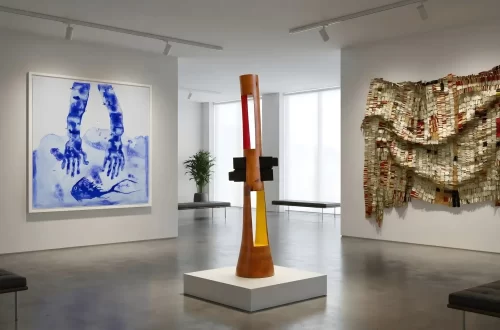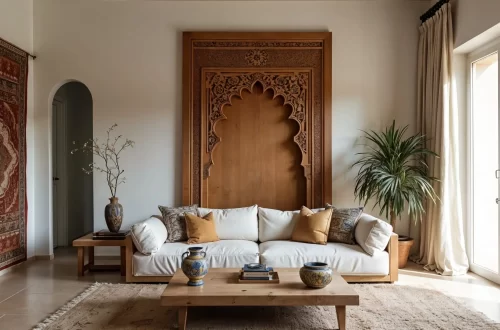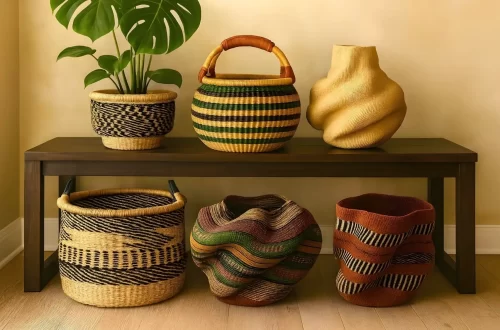Egypt gave the world pyramids, hieroglyphs, and revolutionary advances in mathematics. Yet among its most enduring legacies is one often overlooked: Egyptian ceramics. These remarkable pieces have been crafted for over 6,000 years, and their beauty is nothing short of stunning.
I’m talking about objects so beautiful they were considered magical by their creators. Today, artisans using these same ancient techniques to create pieces that dazzle modern spaces. Let me show you what makes them truly special.
Jump to:
- The Legacy of Egyptian Ceramics
- 1. Ancient Egyptian Pottery
- 2. Fayoum Pottery: Living History in Your Home
- 3. Egyptian Faience: The Ceramic That Glows
- Styling Egyptian Ceramics in Contemporary Spaces
- Caring for Your Egyptian Ceramics
The Legacy of Egyptian Ceramics
Ceramics are materials transformed permanently by heat, like tiles, sculptures, and pottery—all shaped by fire and human hands. Ancient Egyptians started mastering this craft around 4000 BCE. They made some of the most breathtaking objects ever created.
The techniques survived because they work. Therefore, modern Egyptian artisans still use methods their ancestors perfected millennia ago. This connection to ancient craftsmanship adds a special touch to every piece. Let’s journey through the most popular types of Egyptian ceramics.
1. Ancient Egyptian Pottery
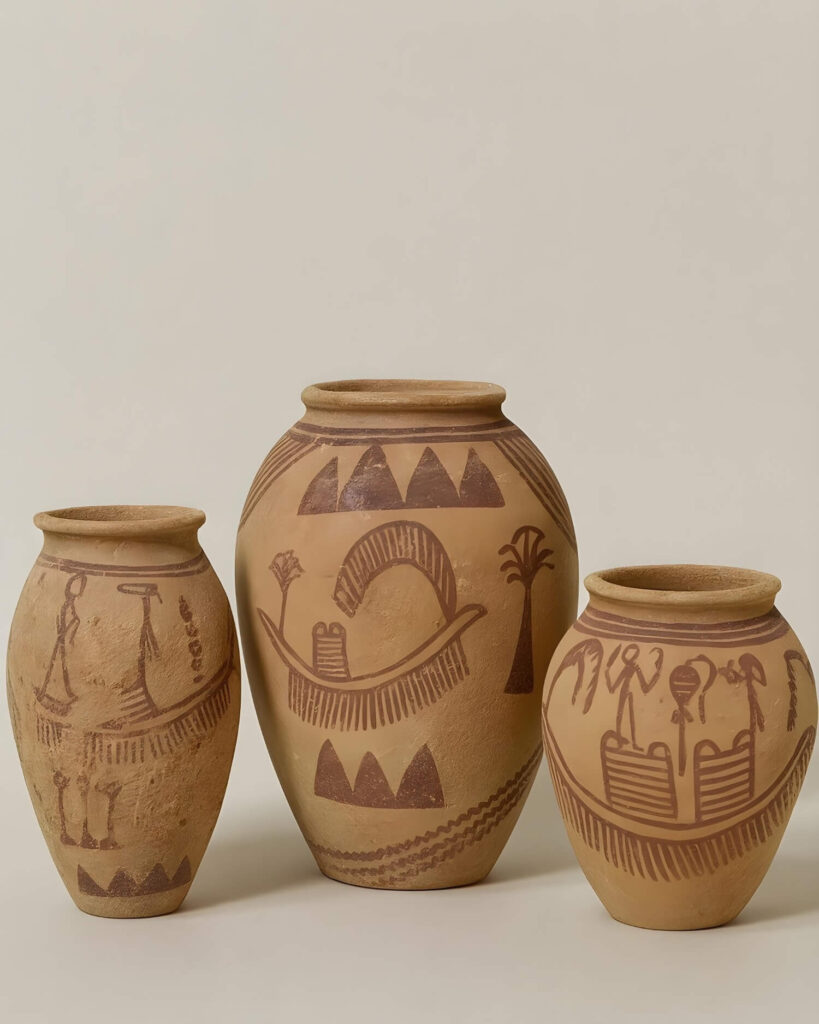
Let’s clear something up first. Pottery is actually a type of ceramic. Specifically, it refers to functional vessels like bowls and cups made from clay.
Ancient Egyptians needed pottery for everything. Cooking, storage, transporting food, cooling water, and more. So they got really, really good at making well-made vessels.
Why Ancient Techniques Matter Today
Egyptian potters understood proportion and form in ways that still influence contemporary design. Many of the clean lines and balanced shapes you see in modern ceramics trace back to these ancient innovations.
African artisans across the continent developed similar mastery over clay and fire. This shared heritage of excellence connects each piece to something larger than itself.
2. Fayoum Pottery: Living History in Your Home
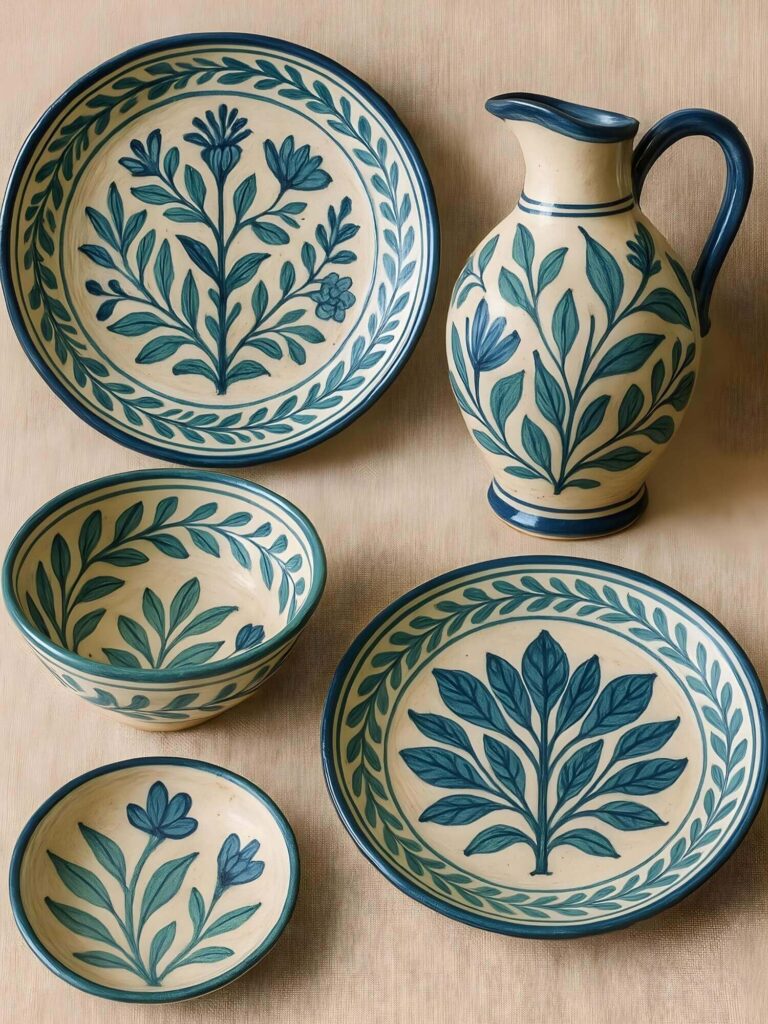
The Fayoum region was once a thriving agricultural oasis. Royal hunting grounds, fertile land, and skilled craftspeople made it famous throughout ancient Egypt, particularly for its masterful pottery.
Today, pottery is still made across Egypt. Upper Egypt and the Delta have important production centers. But Fayoum holds onto something unique that disappeared elsewhere.
In the village of al-Nazla, artisans hand-form spherical water jars called bukla. Their technique? A hammer-and-anvil method probably dating back thousands of years. No potter’s wheel. Just hands, tools, and inherited knowledge. These pieces are then handpainted with care.
These artisans keep ancient methods alive and their range has expanded to stunning plates, cups, and bowls, all perfect for contemporary interiors.
3. Egyptian Faience: The Ceramic That Glows
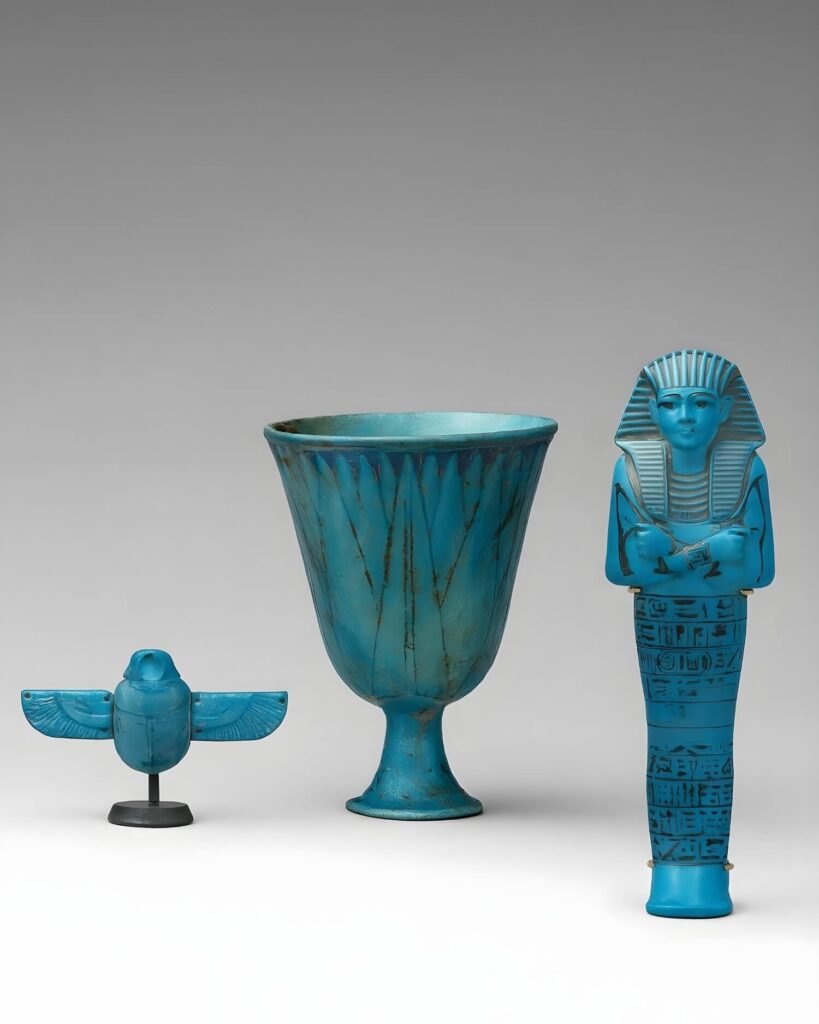
Faience isn’t made from clay at all. Instead, it’s created by fusing silica, soda, and lime together.
The process involves crushed quartz (basically sand), small amounts of lime, and alkaline salts. During firing, those salts migrate to the surface. This gives every object a glassy, colorful glaze that seems to glow from within.
Ancient Egyptians Believed Faience Was Magic
Ancient Egyptians genuinely thought faience objects held supernatural power. They believed these pieces shimmered with the eternal light of the sun. They saw them as vessels of rebirth and regeneration.
Recognizing Authentic Faience
The most common faience pieces are small figures. Gods, animals, and protective amulets crafted in this glowing material.
Jewelry pieces, particularly beads and amulets, also showcased faience’s vibrant blues and greens. And these colors weren’t random. Blue represented the Nile and the heavens. Green symbolized fertility and rebirth. Every shade carried a unique meaning.
From Aswan’s red clay to faience’s glowing blues, Egyptian ceramics come in so many beautiful forms. And here’s what makes them even better: despite their ancient origins, they fit surprisingly well into contemporary homes.
You May Also Like: Old Bronze Bangles: A Stunning African Craft For Chic Homes
Styling Egyptian Ceramics in Contemporary Spaces
You might worry Egyptian ceramics feel too ancient or museum-like, but they actually make today’s spaces look more refined and collected. Here’s how I would style them:
For minimalist interiors:
- Use a single statement piece on an otherwise empty surface
- Let the ceramic’s design shine without visual competition
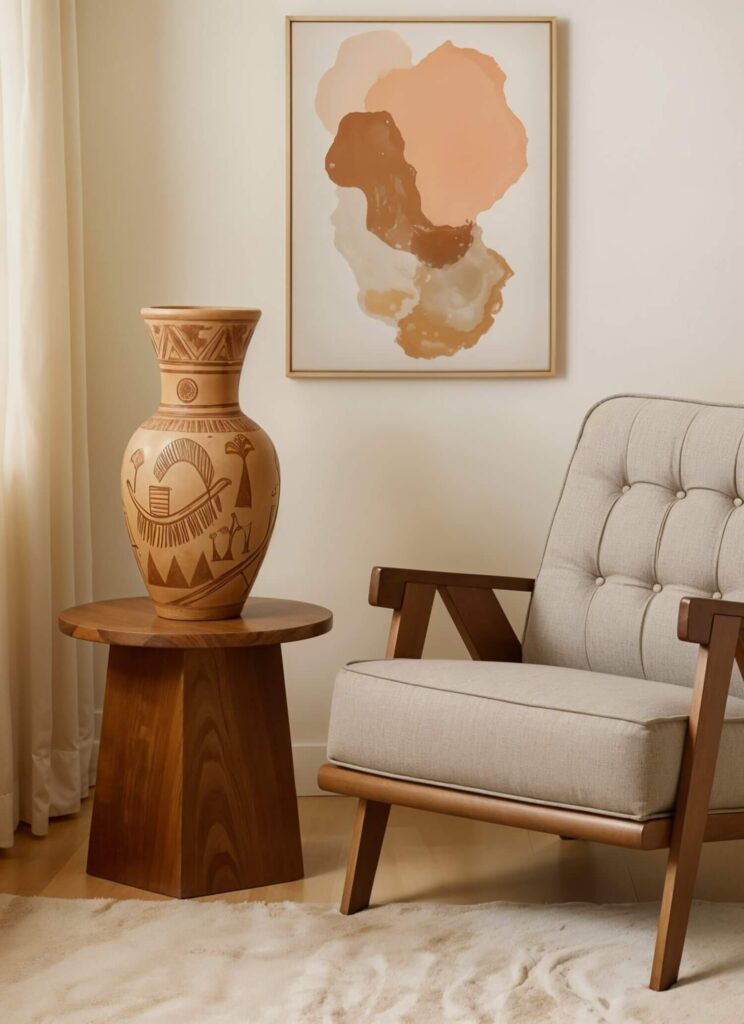
For eclectic spaces:
- Pair faience’s blues and greens with art and other vintage pieces
- Layer different heights and textures for visual interest
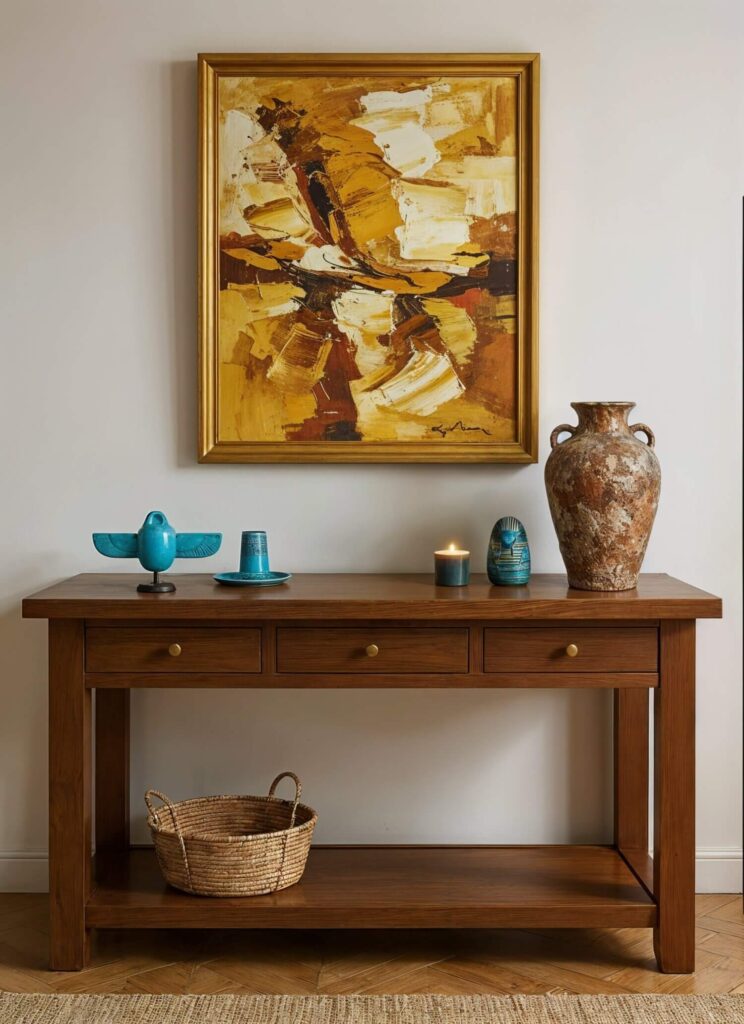
For warm, organic rooms:
- Combine the botanical designs of Fayoum pottery with natural wood tones
- Egyptian ceramic tableware is particularly beautiful in warm spaces.
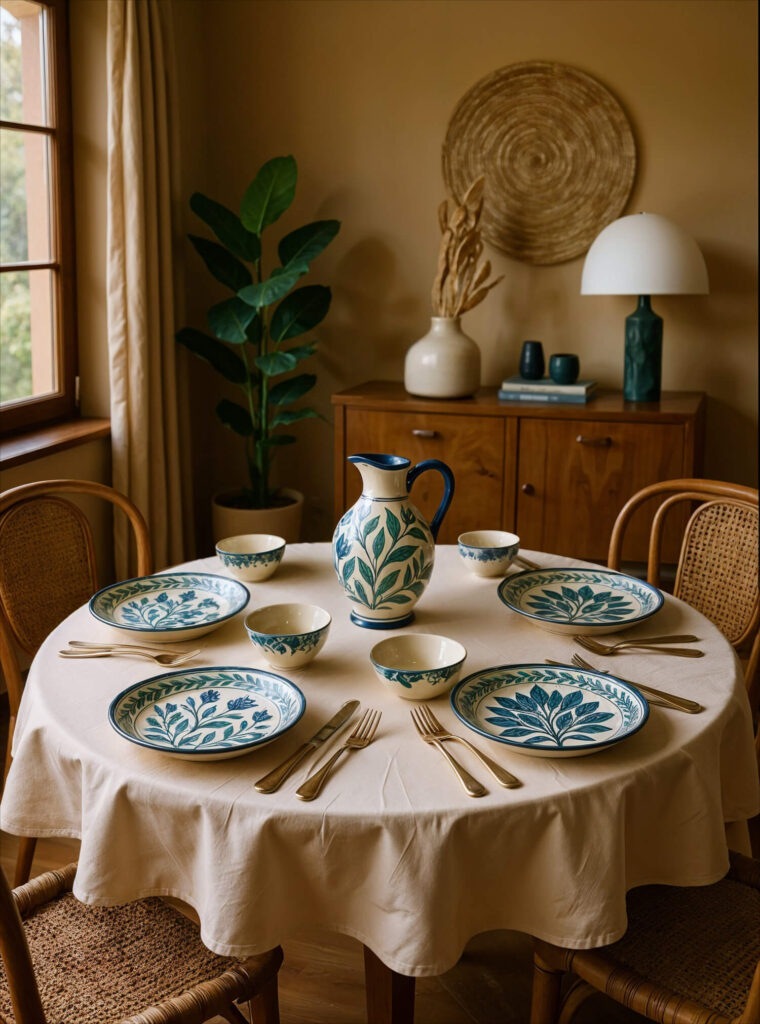
Where to find modern Egyptian ceramics:
- ANŪT: Contemporary interpretations of traditional pottery
- MALAIKA: Modern Egyptian ceramics with historical soul
- ROYA: Pieces that honor ancestral techniques
Caring for Your Egyptian Ceramics
These pieces have survived centuries, and simple care habits will keep them beautiful for generations.
Daily Maintenance
Dust regularly with a soft, dry cloth. Avoid harsh chemicals or abrasive cleaners. For faience especially, moisture can damage the glaze over time. Keep pieces away from high-humidity areas.
Display Considerations
Place ceramics away from direct sunlight, which can fade colors gradually. Ensure shelves are stable—many pieces are heavier than they look.
Handling Antique Egyptian Ceramics
If you’ve invested in genuine ancient ceramics (lucky you), handle them minimally. Oils from skin can affect surfaces over time. Support the base when moving pieces, never lift by handles or narrow sections.
The Real Value of Egyptian Ceramics
Yes, quality Egyptian ceramics cost more than your average home décor. But here’s the thing—these pieces don’t follow trends, they transcend them.
They anchor a room in something real while keeping everything fresh. They bring textures and colors you just can’t get from mass-produced stuff. And that kind of craftsmanship? It changes the energy of your entire space.
Start with one piece that speaks to you. Place it somewhere you’ll see it every day. Watch how it transforms not just the room, but how you experience it.
That’s when you’ll understand why these techniques have endured for 6,000 years—and why they’ll continue captivating us for thousands more.
Discover next: African Pottery: A Timeless Treasure | 7 Remarkable Styles

